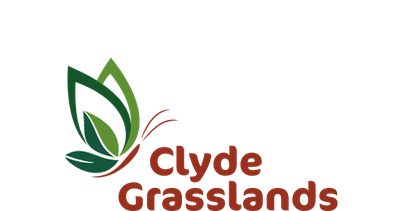Why Peatlands?
Peatland restoration is a nature-based solution to the climate and ecological crises. Healthy bogs can lock up and store large amounts of carbon however, if degraded, may instead emit more carbon than they remove
Healthy, functioning peatlands can help mitigate the anticipated impacts of climate change such as increased rainfall events by storing and slowly releasing water back into the river network. Healthy peatlands are also home to an array of birds, plants, fungi, invertebrates and microorganisms making them an incredibly unique and biodiverse habitat.
Restoring our peatlands
A fifth of Scotland is covered in peat but up to 80% of that is currently degraded and emitting carbon (6.0MtCO2e per year across Scotland, almost equal to that released from Scotland's 2.5 million homes).
The Green Network has developed Clyde Peatlands to directly address the opportunities for peatland restoration across Glasgow City Region with support and funding from NatureScot, through the Peatland ACTION Fund.
Clyde Peatlands has 3 elements

Carbon
Large scale bog restoration to reduce emissions and lock up carbon, particularly in the upland areas around Glasgow City Region.

Connectivity
Restoration of a rich and diverse wildlife habitat and creation of a permeable landscape that allows species to move freely.

Community
Creating local opportunities for people to learn about the importance of bogs and to provide volunteering opportunities in practical restoration.
Benefits of Peatland Restoration

Strategic Habitat Network
In 2019 the GCV Green Network launched its Blueprint which set out a framework for delivery of the Green Network across Glasgow City Region. The Blueprint was based on two key components: an Access Network and a Habitat Network.
The Habitat Network is based on four habitat types, woodland, wetland, grassland and peatland with Clyde Peatlands developing from the latter.
Clyde Peatlands will help address the climate and ecological crises and provide local people with opportunities to get involved with peatland restoration.

Climate Benefits
Glasgow City Region has around 50,000 hectares of peatland, almost the same area as the whole of North Lanarkshire, covering 15% of the region. This represents a huge opportunity in the fight against the twin climate and ecological crises, and Clyde Peatlands will lead on the drive to deliver on that opportunity.
Peatland restoration also has a key role to play in the achieving the region’s Net Zero ambitions through locking up carbon and in reducing the impacts of climate change, such as flooding, by storing and slowly releasing water after heavy rainfall.

Ecological Benefits
Peatland is also a UK and Scottish priority habitat and home to an array of unique plants and animals and restoration will help address the ecological crisis and the dramatic decline of wildlife.
Clyde Peatlands can help species move freely through the landscape to find food and to breed helping species such as the large heath butterfly, a species which is in decline in the UK.
Connectivity from the South of Scotland northwards will also help species migrate north to adapt to a changing climate.
(photo courtesy of Jim Asher)

Community Benefits
Clyde Peatlands will provide local opportunities for people to interact with nature bringing with it a range of health and well-being benefits.
Volunteers can get involved through many local projects such as Butterfly Conservation’s Bog Squad were volunteers have been helping to restore threatened lowland raised bogs in central Scotland since 2014 (photo courtesy of Sara Green at Langlands Moss)
Locals help built dams and remove saplings helping to keep the moss wet and healthy allowing peatland plants and animals can thrive, and locking up carbon.

Where is Clyde Peatlands?
Spanning Glasgow City Region from Loch Lomond to the Southern Uplands, Clyde Peatlands covers the eight regional local authorities of East Dunbartonshire, East Renfrewshire, Inverclyde, Glasgow, North Lanarkshire, Renfrewshire, South Lanarkshire and West Dunbartonshire.
It has been endorsed by the Council Leaders of all eight authorities and aims to bring about a step change in peatland restoration across the region to deliver benefits for the climate, nature and people.
Introduction
Hills dominate the City Region’s landscape. Even from the centre of Glasgow the Campsie Fells to the north, the Kilpatricks to the west, Slammanan Plateau to the east and the start of the Southern Uplands to the south frame the views. And, where there are hills there’s usually peat and this is certainly the case in our area with around an estimated 50,000ha across Glasgow City Region.
We know that nationally up to 80% of peatland is degraded and, with the City Region’s mix of extensive urban areas, agriculture and forestry, it’s very likely that much of our region’s peatland has been damaged.
Clyde Peatlands represents a fantastic opportunity to address this historic degradation and deliver a range of benefits to the people and wildlife of Glasgow City Region.

Carbon
Healthy peatlands can capture and store carbon for very long time periods. However, much of our peat is degraded through drainage for agriculture and forestry and from urban expansion and that means it is emitting carbon rather than storing it.
With challenging national and local targets set to reach Net Zero, peatland restoration will be a key part of that drive. Firstly, we want to repair the degradation and stop the emissions and secondly create healthy, functioning peat bogs that capture and lock in carbon for the long-term through natural processes.
Clyde Peatlands will lead on this drive for Glasgow City Region.

Connectivity
Historically the landscape was much easier for species to move through in search of food, to mate and to escape catastrophic events such as fire. There were lots of habitat patches connected by corridors that species found it easy to move through such as hedgerows, river corridors, natural grasslands and peat bogs. These are known as habitat or nature networks.
Intensive land uses such as agriculture and urban expansion have “fragmented” the landscape for species so that they can no longer move as freely around. We want to reverse this fragmentation by restoring degraded habitat and creating new habitat in key locations that will connect things back up.
Peatland is a UK and Scottish priority habitat and home to a unique array of plants and animals. We want to ensure their future is ensured by allowing to freely through the landscape.

Community
Lowland Raised Bogs are a particular kind of peatland that occur in flatter landscapes, often around where people live in towns and villages. They have very often been badly degraded by drainage and extraction of peat for fuel and fertilizer and are often viewed locally as a place with little value or interest.
We want to change that by offering the chance for people to learn about the value of peatlands and to provide the opportunity to get actively involved in repairing them through volunteering. This will bring with it a range of health and well-being benefits as well changing perceptions of bogs to a valuable local asset.

Can you help us deliver?
Peatland restoration represents a fantastic opportunity for Glasgow City Region to contribute to net zero targets while helping address the impacts of increased rainfall and assisting with nature’s recovery.
Peatland restoration can also help individual landowners with net zero ambitions, reduce flooding on their land and regulate flows in rivers and streams. Clyde Peatlands will only succeed if we are able to work with and support landowners and land managers who have peatland in need of restoration.
We would like to speak with you if:
1. You are a public or private sector landowner or land manager who has degraded peat on your land.
2. You would like free advice and consultation on peatland restoration opportunities on your land.
3. Advice on the potential to generate an income through the Peatland Carbon Code.
4. You’d be interested in up 100% funded feasibility and delivery works.
5. Project management of contractors and on the ground works.
Contact Us: enquiries@gcvgreennetwork.gov.uk
Peatlands Brochure
The Green Network has developed Clyde Peatlands to directly address the opportunities for peatland restoration across Glasgow City Region with support and funding from NatureScot, through the Peatland ACTION Fund. See our brochure for more.

Case Study: Whitelee Wind Farm, East Kilbride
Whitelee is the UK’s largest onshore wind farm. As part of the Whitelee development the site owners, Scottish Power Renewables, committed to restoring 900 hectares of previously forested blanket bog and 1700 hectares of drained blanket bog. Restoration techniques included ground smoothing the deforested areas and wave damming (blocking) drained areas to encourage peatland species to recolonise. Over half of Whitelee’s peatlands are on the road to restoration with the remainder planned for the next 5 years.

Case Study: Lenzie Moss, East Dunbartonshire
Lenzie Moss is a lowland raised bog that was modified and degraded through historic peat extraction. Over the last 20 years a partnership between East Dunbartonshire Council and the Friends of Lenzie Moss have worked together to improve the condition of the bog. Restoration included tree removal and ditch blocking. Drying out of the bog has been reduced and wetter areas created providing vital habitats for wildlife and key bog building plants such as sphagnum moss. This, in addition to access improvements, has transformed the site into a healthier peatland landscape and a much valued and well-used local outdoor space. This project is supported by NatureScot, through the Peatland ACTION Fund.
View our other delivery projects

Newsletter Signup
Learn more about GCV Green Network! You can be the first the hear about our latest news.
Designed & Built by Mucky Puddle










